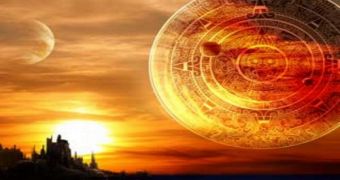Last week, NASA released a video titled "Why the World Didn't End Yesterday," in which they tried to put some rumors about the supposed 2012 apocalypse to rest.
The clip was dated December 22, a day after the alleged end of the world; however, it leaked or was accidentally published earlier.
Live Science posts 5 myths about the apocalypse that have no standing, the first of which is the theory that a solar storm will occur on December 21, ravishing the planet and killing us all.
Though an increase in solar storms and flares can influence our planet, peaks in solar activity, occurring every 11 years, will do nothing worse than perhaps damage satellites and temporarily affect telecommunications.
The Earth's magnetic poles will not switch places, the same publication notes. Though the phenomenon does occur over the course of hundreds of thousands of years, it wouldn't happen in one day.
A popular myth is that of Planet X, a mysterious celestial body that is set to collide with Earth. The concept of Planet X was popularized with the translation of an ancient Sumerian text in 1976. The manuscript identified the planet Nibiru, which allegedly orbits the sun every 3,600 years, which is why we have never spotted it before.
Nibiru's appearance was expected for 2003; however, the Mayan apocalypse scenario is the perfect setting for rumors about its existence to ignite our imagination. As NASA says, if it were on its course for Earth, it would be visible by now, so, if you still believe it exists, just look out the window.
The planets will not align this December, nor will that happen in the next few decades.
"Even if these alignments were to occur, their effects on the Earth would be negligible," a statement by NASA reads.
Last but not least, I will talk about the dreaded blackout. As I wrote before, people in China are buying a lot of candles these days, fearing a 3-day period of complete darkness. That period is between December 23 and 25, which means we would be spending Christmas in the dark.
The darkness would be a result of the alignment between the sun and the Earth, for the very first time in history. However, "there is no such alignment," NASA says.

 14 DAY TRIAL //
14 DAY TRIAL //